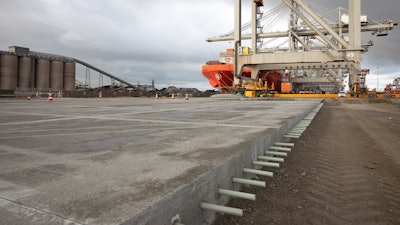Discovering the Benefits of Composites in Building
Discovering the Benefits of Composites in Building
Blog Article
Opening the Environmental Advantages of Recycled Compounds in Building and Design
In the world of construction and style, the utilization of recycled compounds holds substantial promise for enhancing sustainability techniques and decreasing environmental effect. The shift in the direction of a much more lasting future in these industries pivots on unlocking the full capacity of recycled compounds.

Ecological Influence Decrease
The reduction of environmental influence via the usage of recycled compounds in building and construction and layout plays an important function in sustainable methods. By incorporating recycled composites right into structure materials, the construction sector can dramatically reduce its carbon footprint and add to a much more environment-friendly future. These sustainable products, made from repurposed plastics, timber fibers, or other recycled components, supply a practical option to typical construction materials without compromising on quality or resilience.
Recycled composites help draw away waste from land fills and reduce the need for drawing out resources, hence saving all-natural sources. In addition, the manufacturing process of these composites typically eats much less energy and gives off fewer greenhouse gases contrasted to generating virgin materials (composites). This change in the direction of making use of recycled composites not just lessens ecological harm yet likewise advertises a circular economic climate by motivating the reuse of materials that would or else be disposed of
Waste Reduction
With an emphasis on reducing waste in building and construction and style, the assimilation of recycled composites supplies a sustainable option to reduce ecological impact. Waste reduction is an important facet of sustainable methods, and using recycled composites offers an opportunity to attain this objective efficiently. By using products that have already served their preliminary objective, such as recycled plastics or reclaimed wood fibers, the building and style sectors can significantly decrease the amount of waste produced and sent to garbage dumps.
Recycled compounds have the possible to draw away substantial amounts of waste from standard disposal methods, adding to an extra circular economy where sources are made use of effectively. In addition, the manufacturing procedure of recycled composites commonly consumes less power and generates less discharges contrasted to virgin products, additionally minimizing the ecological footprint of building and style projects.
Implementing waste minimization approaches via the unification of recycled compounds not just aids in saving natural deposits but additionally advertises a much more lasting strategy to structure and creating for a greener future.
Energy Conservation
Incorporating recycled composites not just lessens waste in building and design but also plays an important function in enhancing energy preservation techniques within the market. Making use of recycled composites in construction can considerably add to energy preservation with various means. The manufacturing of virgin materials commonly needs considerable energy inputs, whereas using recycled composites eats less energy, therefore lowering overall energy intake. Furthermore, integrating recycled composites can contribute to far better insulation residential or commercial properties in buildings, lowering the requirement for extreme home heating or cooling, and subsequently reducing energy use for climate control. The light-weight nature of many recycled composites can lead to lighter frameworks, calling for less energy for transportation and installment. By advertising using recycled composites in building and construction and layout, the market can make considerable strides in the direction of achieving energy efficiency and minimizing its carbon impact, eventually adding to an extra sustainable developed atmosphere.
Carbon Footprint Reduction
Enhancing sustainability methods with the application of recycled compounds in building and construction and layout significantly reduces the carbon footprint of the industry. By incorporating recycled materials into the production of composites, the need for virgin resources reduces, bring about lower energy consumption and greenhouse gas discharges related to standard production procedures. additional resources This decrease in carbon footprint is vital in combating climate change and promoting a more eco pleasant technique to construction and layout.
The carbon impact reduction achieved via the adoption of recycled composites lines up with the international push towards sustainable methods and the decrease of industrial discharges. Inevitably, by focusing on the integration of recycled composites, the market can make substantial strides in lowering its carbon footprint and adding to an extra lasting future.
Sustainable Future
The assimilation of recycled composites in construction and design not just addresses instant environmental concerns yet additionally lays a strong foundation for a lasting future in the market. By incorporating recycled composites right into building products and my site products, the building and construction and design fields can substantially decrease their dependence on virgin resources, bring about a much more round economic climate. This shift in the direction of sustainability is vital for reducing the ecological effect of conventional construction techniques, which commonly cause high degrees of waste generation and resource depletion.

Conclusion
Finally, recycled compounds offer significant environmental benefits in building and layout by reducing environmental impact, lessening waste, conserving energy, reducing carbon footprint, and promoting a sustainable future. Accepting the usage of recycled compounds can add to a much more environmentally-friendly technique to structure and layout, inevitably resulting in a more lasting and greener future for all.
The reduction of environmental impact via the usage of recycled compounds in building and construction and layout plays a crucial role in sustainable practices.With an emphasis on lessening waste in building and construction and style, the combination of recycled composites provides a sustainable service to reduce environmental impact. By advertising the usage of recycled compounds in building and design, the market can make substantial strides towards achieving power efficiency and reducing its carbon impact, ultimately adding to a more lasting developed environment.

Report this page